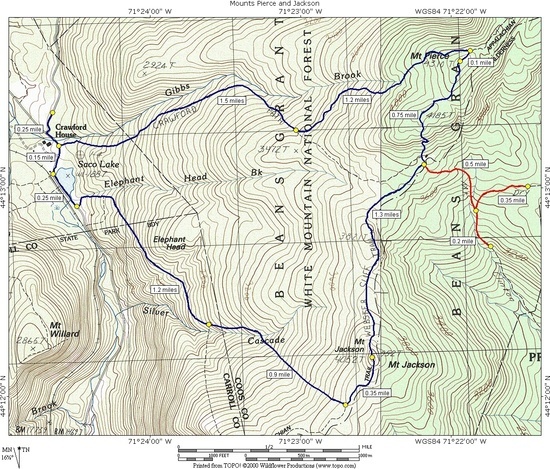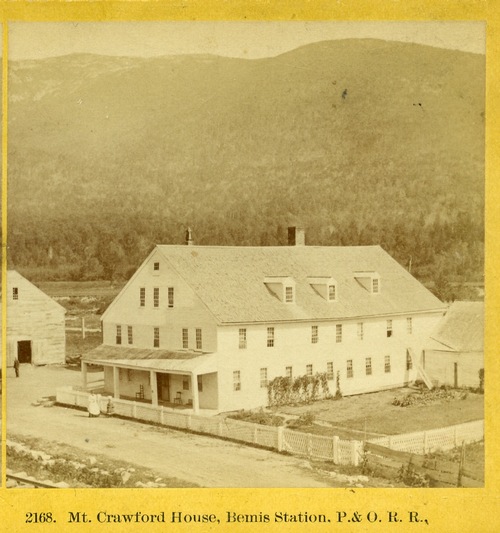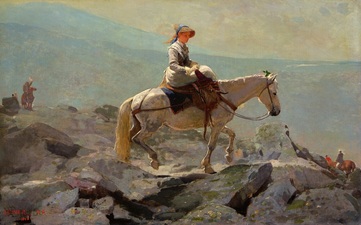The Crawford Path: 200 Years of Hiking in the White Mountains
2017-06-23 08:39:30.000 – Julia Moreland, Summit Intern
Mount Washington, and the White Mountains in general, have a long and diverse history. There are now many paths extending from the summit, leading into nearby ravines and forests, allowing travelers and hikers to enjoy the beauty and scenery that New Hampshire offers. However, there is a particularly historic and well known path that is centuries old.
The Crawford Path, running 8 1/2 miles from US Route 302 to the summit of Mount Washington, will be celebrating the 200th anniversary of its existence in 2019. It is known as the oldest hiking trail still in continuous use in the United States, and has a very intriguing history.

There were certainly trails leading to the summit, as well as traversing through the White Mountains as early as the existence of the Indian settlements of the area. Timothy Nash, an early European settler, was one of the well-known travelers said to have found Crawford Notch while tracking a moose over Cherry Mountain. From his expedition, a road was eventually built from Lancaster through the notch to Portsmouth.
The Crawford family were of the first permanent settlers in the Crawford Notch area (then called the White Mountain Notch) in 1793, and aided in developing the popularity of the area – thus allowing the area to be named in honor of their presence. They provided shelter for early travelers, building and maintaining various inns near the base of the mountain, and even guiding them up to the summit. Thus, they became famous mountain guides of this area of the Whites; this news quickly spread, and encouraged other hikers to come and explore the area. Around 1819, after seeing the trouble travelers had to go through to summit Mount Washington, Abel Crawford and his family helped to establish a proper path that would lead to the summit easily, cutting through the trees and brush that were tangled beneath the rock pile.

This trail became widely known, attracting travelers and hikers of all sorts to take this new path. As more visitors flooded the area, they carved more paths, allowing many to experience the journey to the summit.
Of course, with the advancement of travel and transportation, more accommodations would be added to the famous Crawford Path and the surrounding area with the steady stream of hikers arriving to the notch. By 1840, the first path built was converted to a bridle path, expanding the range of travelers that were able to traverse their way to the summit, now on horseback. With the arrival of the railroad in 1851, more tourists began to find their way to the notch, with more and more hotels were being built to hold the growing tourist population.

This not only allowed the general public to travel to the summit – scientists, poets, and artists took advantage of the now widely popular area, allowing for anyone to experience the beauty of the region without having to be skilled in treacherous mountaineering. Charles T. Jackson, the state geologist at the time, brought his instruments to the summit on horseback, and crafted his report on the state’s geology. He was led up by Mr. Abel Crawford himself, now a well-known guide of the White Mountain region.
Henry David Thoreau found his way to the mountain in 1858, also utilizing the Crawford Path. Despite the many hotels built for travelers, he chose to camp near the mountain, very characteristic of his transcendentalist-inspired writing and ideals, and was led up the mountain with the help of a guide.
As general tourism began to die down with the burning down of these grand traveler-accommodating hotels, hiking societies, guidebooks, and new trails began to pop up nearing the 20th century. One of the first to write a White Mountain Guidebook, M.F. Sweester, said “the Crawford Path “can be followed without a guide by any one of ordinary intelligence,” showing how well-kept this trail was made by the Crawford family, but to this day still maintains its natural, remote beauty, as it did when it was first blazed.
Even with the advancement hiking culture through the decades, all of these trails can in some way be traced back to the settlement of the Crawford’s and their ground-breaking paths to the summit of Mount Washington.
Sources:
http://ultimatehistoryproject.com/crawford-path.html – article author footnote: “The first ascent of Mont Blanc was indeed in 1786, but the Belknap and Cutler expedition to Mt Washington was in 1784.”
http://whitemountainhistory.org/The_Crawford_Family.html
https://www.nhstateparks.org/uploads/old-images/pdf/WilleyHouse-InfoSheet.pdf
Julia Moreland, Summit Intern
Supporter Spotlight: Ryan Shepard
Supporter Spotlight: Ryan Shepard By Ryan Shepard and Carissa Milliman Ever since I was a kid, living in Western New York and growing up with lake effect snow, I thought harsh weather was incredibly
Supporter Spotlight: Erik Rider
Supporter Spotlight: Erik Rider By Wendy Almeida For Erik Rider, supporting Mount Washington Observatory comes from a lifelong fascination with weather and how it shapes daily life. Growing up along the Massachusetts coast, he
An Autumn Above the Clouds on Mount Washington
An Autumn Above the Clouds on Mount Washington By Cassie Farnsworth I don’t know how many times in life you get to say “it was exactly what I hoped it would be,” but my


